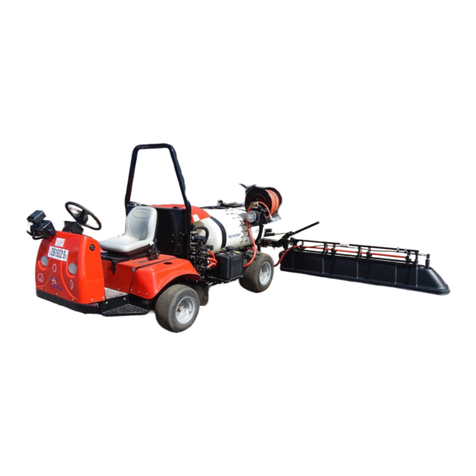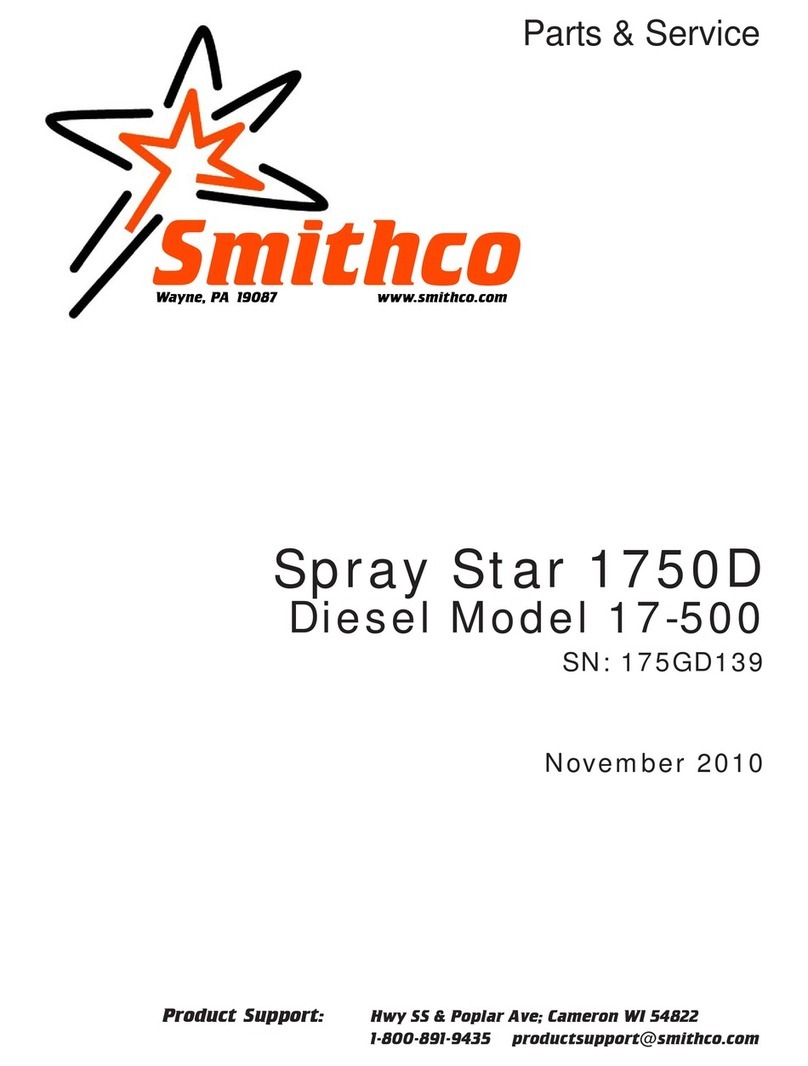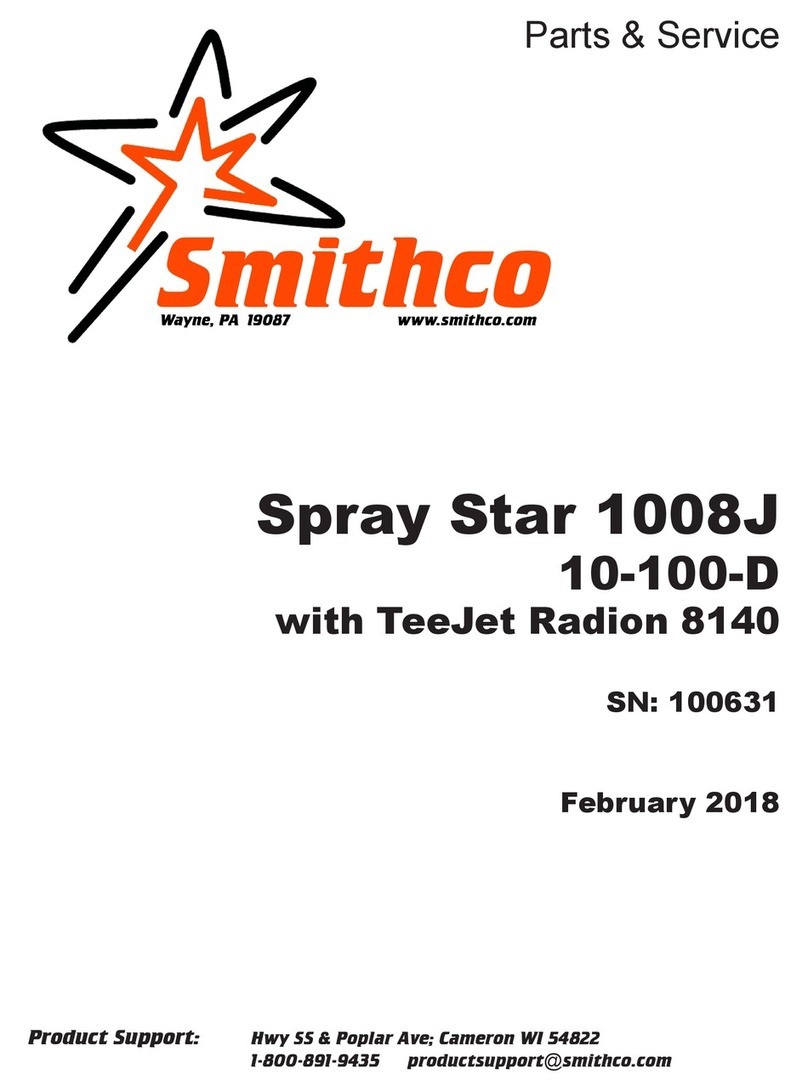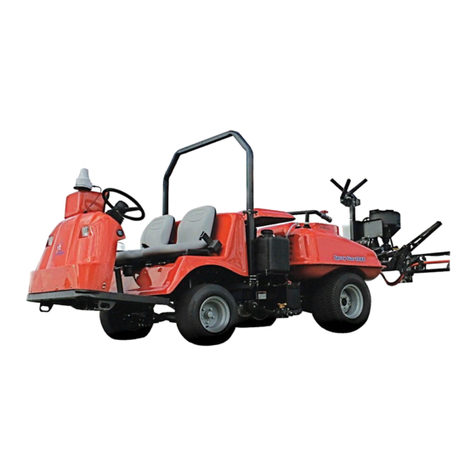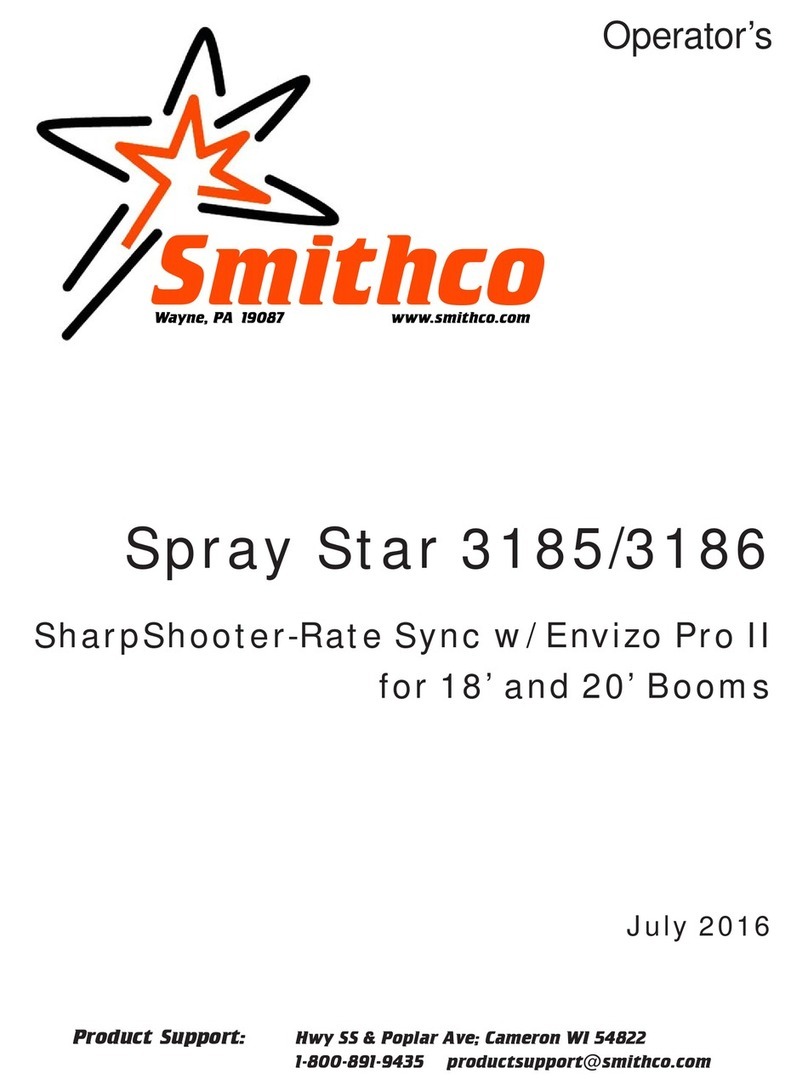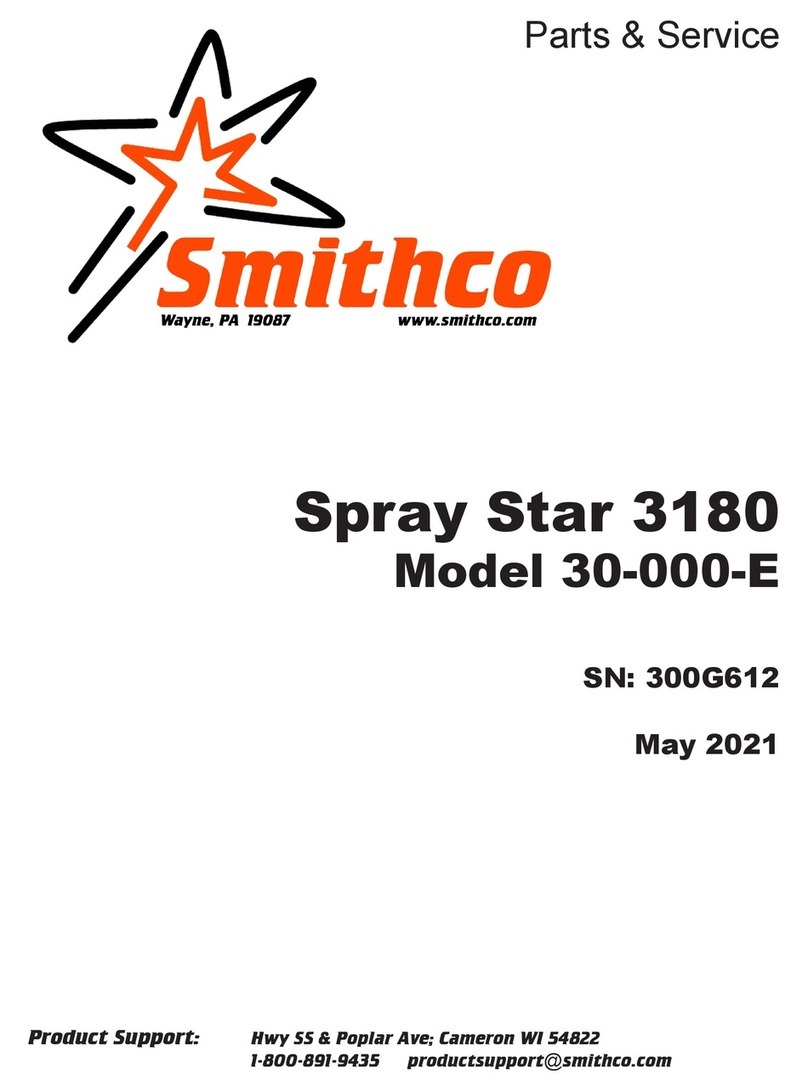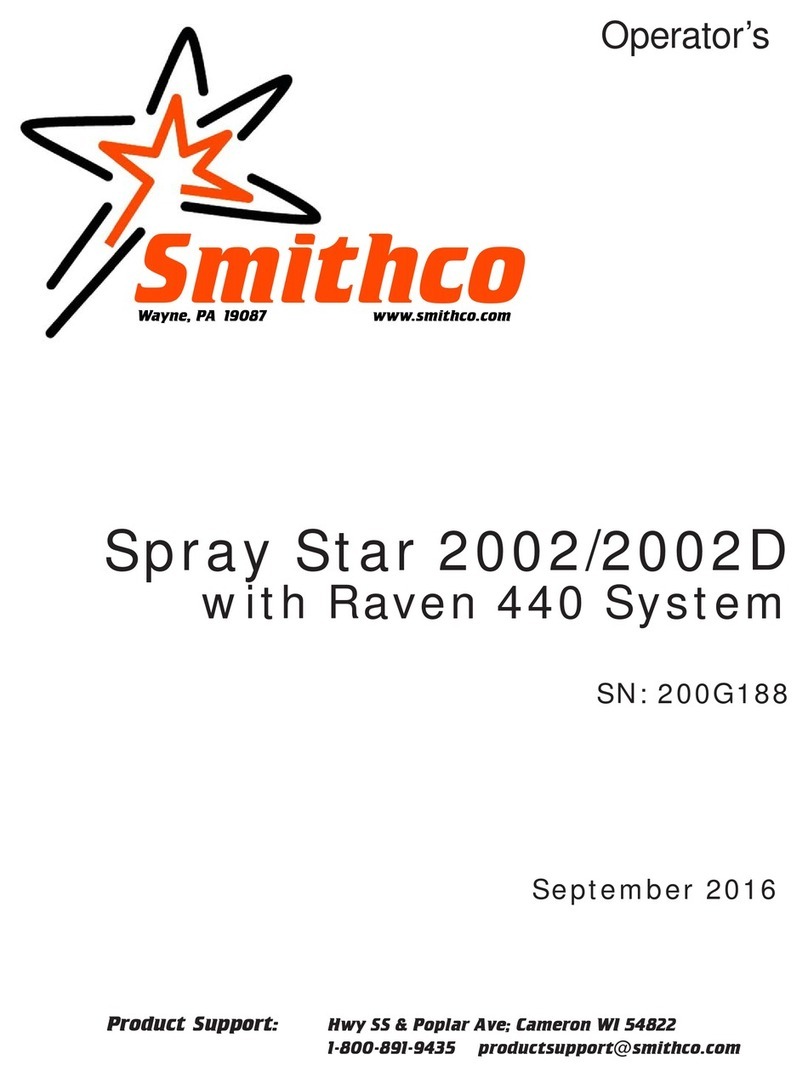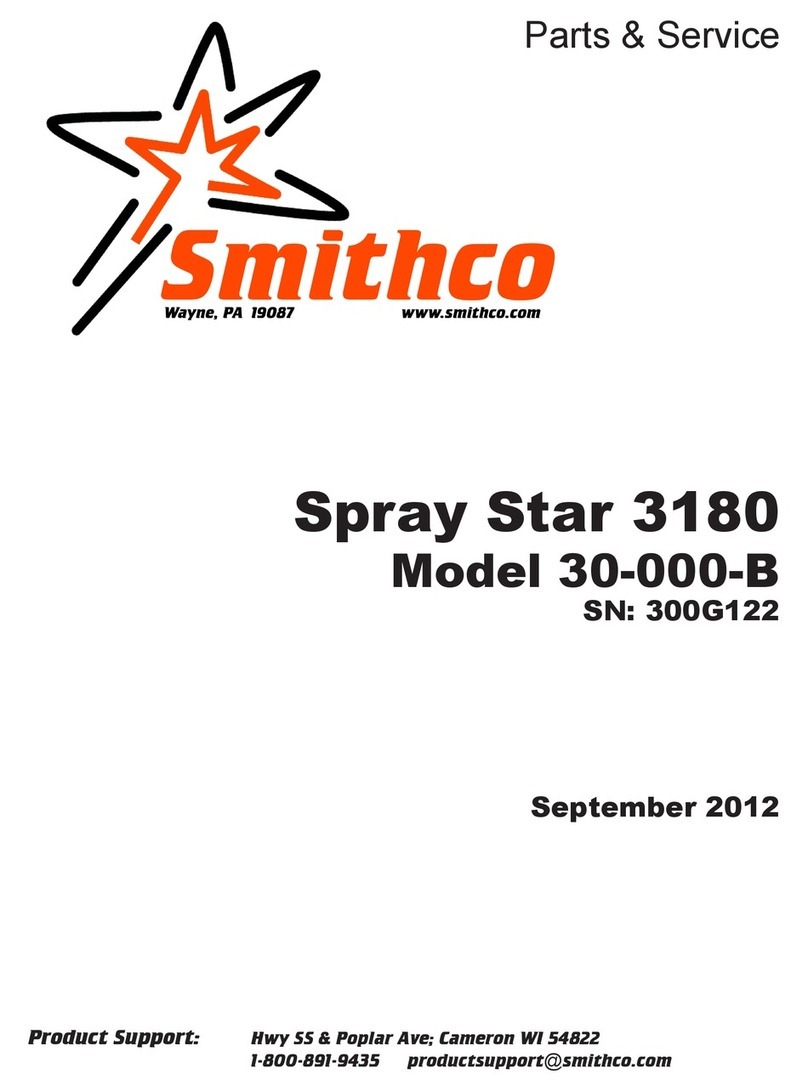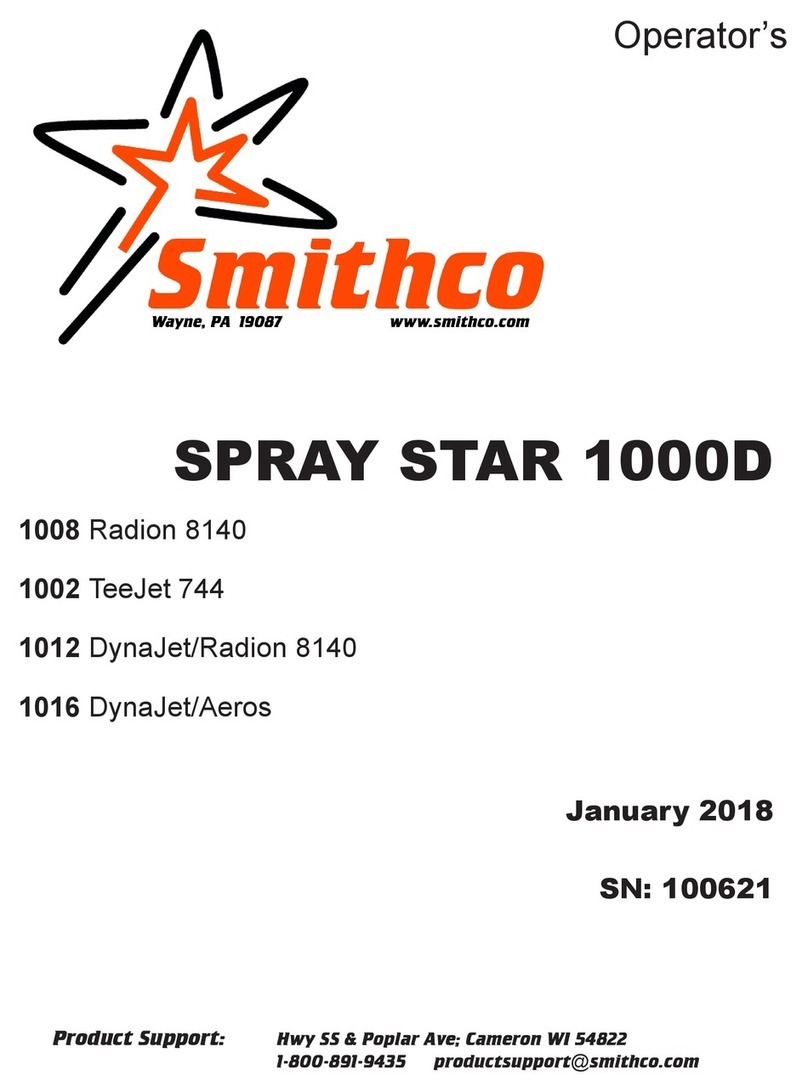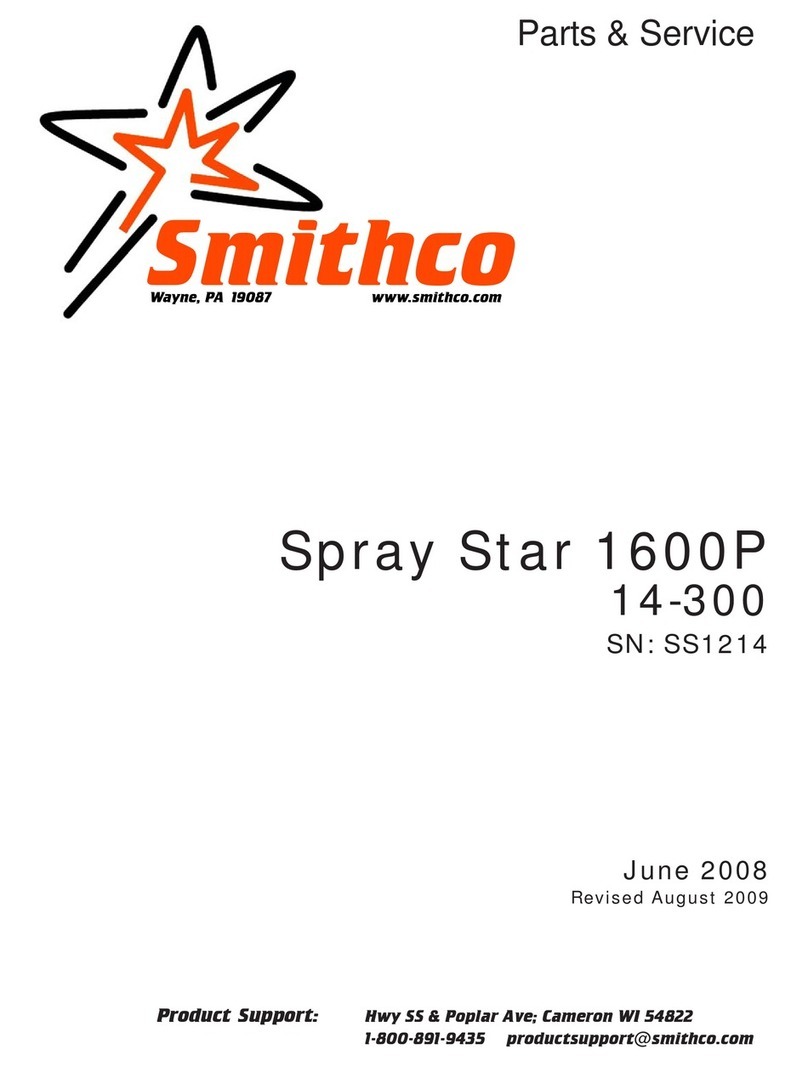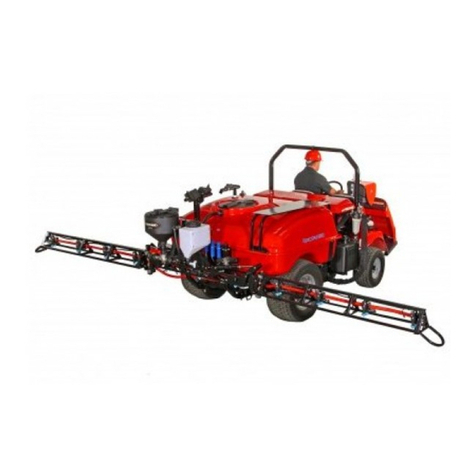
4
Introduction
PARTS MANUALS AVAILABLE ONLINEAT smithco.com
SAFEPRACTICES
1. It is your responsibility to read this manual and all publications associated with this machine.
2. Neverallow anyoneto operate orservice themachine or itsoptional equipmentwithout propertrainingand
instructions.Never allowminorsto operateany equipment.
3. Learnthe proper useof the machine,the location and purposeof all thecontrols and gaugesbefore you
operatethe equipment. Workingwith unfamiliar equipmentcan lead toaccidents.
4. Wear all the necessary protective clothing and personal safety devises to protect your head, eyes, ears,
hands and feet. Operate the machine only in daylight or in good artificial light.
5. Inspect the area where the equipment will be used. Pick up all debris you can find before operating.
Bewareof overheadobstructions andunderground obstacles.Stay alertfor hiddenhazards.
6. Neveroperate equipment thatis not inperfect working orderor without decals,guards, shields, orother
protectivedevices inplace.
7. Never disconnect or bypass any switch.
8. Carbonmonoxide inthe exhaust fumescan befatal when inhaled,never operatea machinewithoutproper
ventilation.
9. Fuel is highly flammable, handle with care.
10. Keep engine clean.Allow the engine to cool before storing and always remove the ignition key.
11. Disengageall drives andset parkbrake before startingthe engine.
12. Neveruse your hands tosearch for oil leaks.Hydraulic fluid under pressurecanpenetrate the skin and
cause serious injury.
13. Thismachine demands yourattention.To prevent lossof control ortipping of thevehicle:
A. Use extra caution in backing up the vehicle. Ensure area is clear.
B. Do not stop or start suddenly on any slope.
C. Reduce speed on slopes and in sharp turns. Use caution when changing directions on slopes.
D. Stay alert for holes in the terrain and other hidden hazards.
14. Beforeleaving operator’sposition:
A. Disengagealldrives.
B. Set park brake.
C. Shut engineoff andremove the ignitionkey.
D. If engine has to run to perform any maintenance keep hands, feet, clothing and all other parts of body
awayfrom movingparts.
15. Keephands, feet andclothing away from movingparts. Wait forall movement to stopbefore you clean,
adjustor service themachine.
16. Keepthe area ofoperation clear ofall bystanders.
17. Nevercarry passengers.
18. Stopengine before makingrepairs/adjustments or checking/addingoil to thecrankcase.
19. Use parts and materials supplied by only. Do not modify any function or part.
20. Use caution when booms are down as they extend out beyond the center line of the machine.
21. The tank is a confined space, take precaution.
These machines are intended for professional maintenance on golf courses, sports turf, and any other
area maintained turf and related trails, paths and lots. No guaranty as to the suitability for any task is
expressed or implied.
